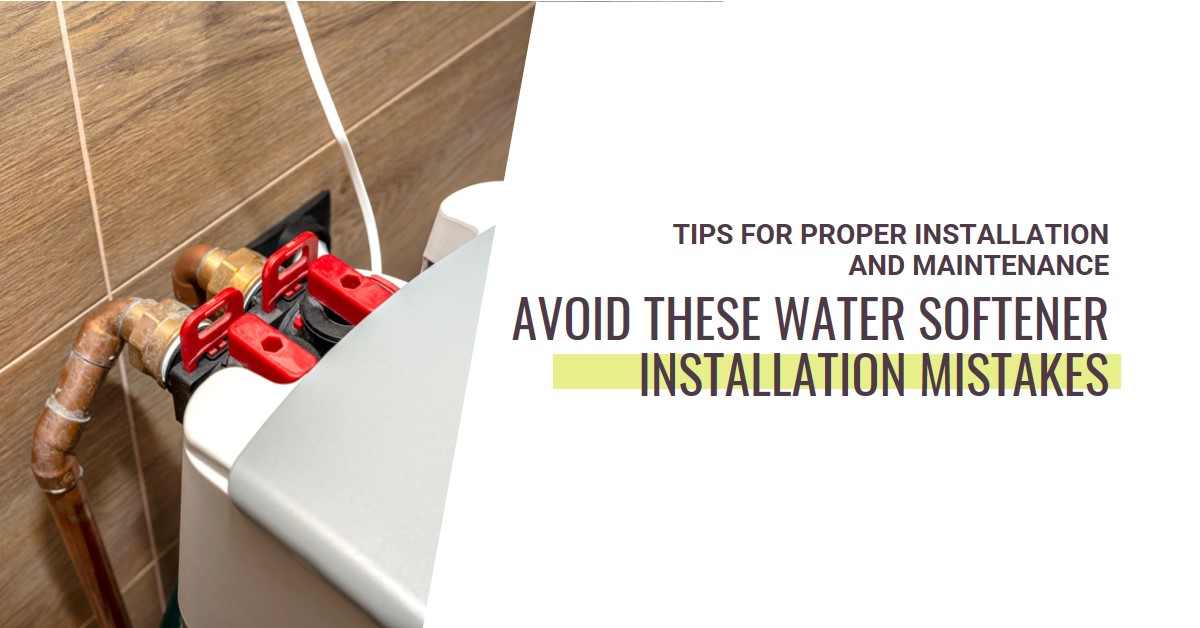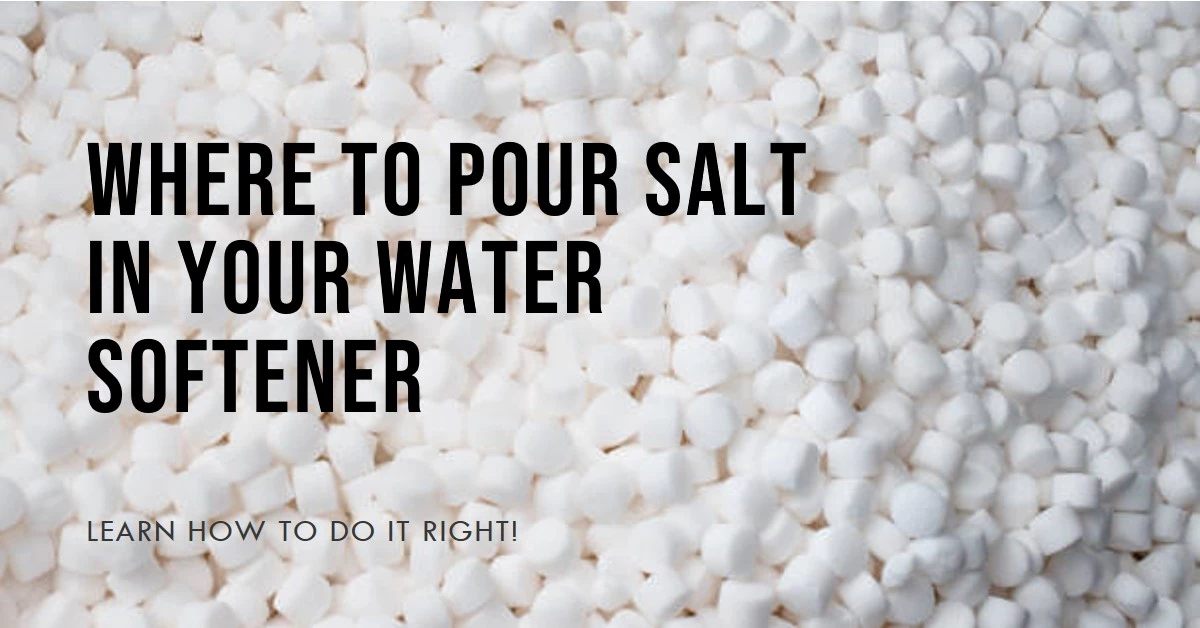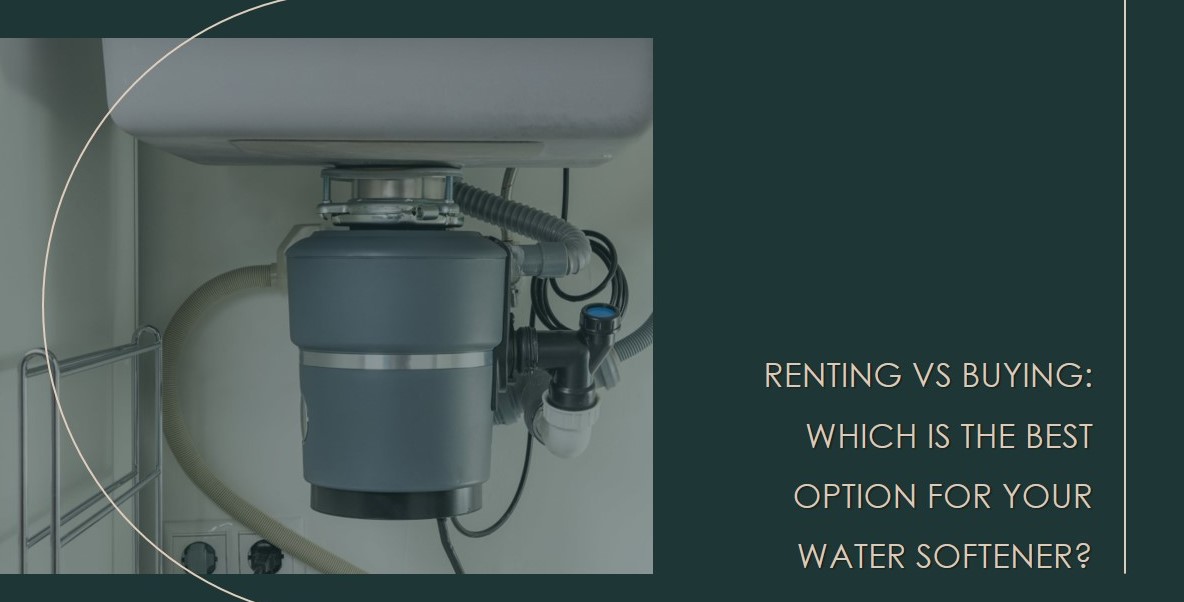Installing a water softener is a crucial step towards improving the quality of your household water supply. However, without proper care and attention, common mistakes can arise during the installation process. In this comprehensive guide, we will explore the most frequent errors people make when installing water softeners and provide practical solutions to avoid them. By following these recommendations, you can ensure a smooth and successful installation that guarantees the optimal functionality of your water softener.
Introduction
When it comes to water softener installation, avoiding common mistakes is essential for achieving the desired results. By understanding and addressing these potential pitfalls, you can save time, money, and effort in the long run. In this article, we will discuss some of the most prevalent errors homeowners make during the installation process and offer valuable insights to help you steer clear of these missteps.
Benefits of Proper Installation
Proper installation of a water softener brings numerous benefits that go beyond simple water conditioning. By avoiding common mistakes, you can enhance the effectiveness of your water softener and experience the following advantages:
- Efficient Scale Prevention: Correctly installed water softeners are highly effective in preventing scale buildup in your plumbing fixtures and appliances. This reduces the risk of clogs and prolongs the lifespan of your equipment.
- Improved Water Quality: A properly functioning water softener removes hardness minerals, such as calcium and magnesium, resulting in softer water. This leads to enhanced lathering ability, reduced soap scum, and softer laundry.
- Extended Appliance Lifespan: By eliminating scale and mineral buildup, your water softener helps appliances like washing machines, dishwashers, and water heaters operate more efficiently. This can extend their lifespan and reduce the frequency of repairs.
- Energy Efficiency: Softened water requires less energy to heat, as it doesn’t suffer from the insulating effects of scale buildup. This can lead to energy savings and lower utility bills.
- Smoother Skin and Hair: Soft water is gentler on your skin and hair, reducing dryness and irritation. It can leave your skin feeling softer and your hair more manageable.
Understanding these benefits reinforces the importance of avoiding common mistakes during water softener installation. Let’s delve into the specific errors to watch out for and the steps to take to ensure a successful installation.
Common Mistake: Poor Preparation
One of the most significant mistakes people make when installing a water softener is inadequate preparation. Failing to prepare properly can lead to complications and delays during the installation process. Here are some essential steps to follow for effective preparation:
- Gather Necessary Supplies and Tools: Before starting the installation, ensure that you have all the required supplies and tools readily available. These may include the water softener unit, necessary connectors and fittings, tubing, valves, wrenches, and pipe cutters.
- Read the Manufacturer’s Instructions: Carefully review the manufacturer’s instructions that accompany your water softener. Familiarize yourself with the installation process, recommended tools, and any specific requirements or precautions.
- Inspect the Installation Area: Examine the location where you plan to install the water softener. Ensure that there is adequate space, proper access to plumbing connections, and suitable drainage options for the softener’s discharge.
By adequately preparing for the installation, you can avoid unnecessary delays and complications, ensuring a smoother process overall.
Common Mistake: Choosing the Wrong Size
Selecting the correct size of a water softener is crucial for its efficient operation. Choosing the wrong size can result in suboptimal performance and dissatisfaction with the system. To avoid this mistake, consider the following factors:
- Determine Your Household’s Water Demand: Assess your household’s daily water usage to estimate the required water softener capacity. Consider the number of occupants, bathrooms, and average water consumption patterns.
- Account for Peak Demand: Factor in periods of high water demand, such as when guests visit or during simultaneous appliance use. Ensure that the water softener can handle peak demand without compromising performance.
- Consult a Water Treatment Professional: If you are unsure about the appropriate size for your water softener, consult a water treatment professional. They can perform a water hardness test and recommend the suitable capacity based on your specific needs.
Choosing the right-sized water softener ensures efficient operation, optimal water conditioning, and avoids potential issues arising from an undersized or oversized unit.
Common Mistake: Using the Wrong Fittings
Using incorrect fittings during the water softener installation can lead to leaks and other plumbing issues. It is essential to select the appropriate fittings that match your plumbing system and ensure a secure and leak-free connection. Consider the following guidelines:
- Identify the Pipe Material: Determine the type of plumbing pipes in your home, such as copper, PVC, or PEX. Each pipe material requires specific fittings for proper connection.
- Measure Pipe Diameter: Measure the diameter of the existing pipes and select fittings that match the size. Properly sized fittings ensure a snug and leak-free connection.
- Choose Reliable Connectors: Opt for high-quality connectors and fittings that are designed for water softener installations. These fittings are often labeled as “lead-free” and are compliant with plumbing codes.
Using the correct fittings and connectors minimizes the risk of leaks and plumbing complications, providing a secure and reliable water softener installation.
Common Mistake: Incorrect Drain Hose Placement
Improper placement of the drain hose is a common mistake that can lead to water backup and overflow. To prevent these issues, it is crucial to follow the recommended guidelines for drain hose installation:
- Maintain Proper Elevation: Ensure that the drain hose maintains a proper elevation throughout its length. It should be positioned higher than the highest point of the water softener and should not create any dips or loops that can impede drainage.
- Avoid Drain Hose Restrictions: Do not restrict the flow of the drain hose by bending or crimping it. Ensure that it has a smooth and unobstructed path for water discharge.
- Direct Drain Hose Appropriately: Direct the drain hose to an appropriate drainage point, such as a floor drain, utility sink, or a dedicated drain line. Avoid connecting it to a sewage or septic system, as it may not comply with local regulations.
By correctly placing the drain hose, you can prevent water backup and ensure efficient water discharge from the water softener.
Common Mistake: Not Hiring a Professional
While installing a water softener can be a DIY project, it may require some plumbing knowledge and skills. Not hiring a professional when needed can result in errors and potential complications. Here are some considerations when deciding whether to hire a professional or proceed with a DIY installation:
- Assess Your Skills and Knowledge: Evaluate your plumbing skills and knowledge to determine if you have the necessary expertise to complete the installation correctly. Consider your comfort level with tasks such as cutting and connecting pipes, soldering, and ensuring proper water flow.
- Understand Local Regulations: Familiarize yourself with local plumbing codes and regulations regarding water softener installations. Ensure that you can meet these requirements and obtain any necessary permits.
- Consult a Professional: If you are unsure about any aspect of the installation or lack the confidence to perform it yourself, it is advisable to consult a professional plumber. They can provide expert guidance, ensure compliance with regulations, and guarantee a proper installation.
Hiring a professional for water softener installation offers peace of mind, ensures proper implementation, and can potentially save time and money by avoiding costly mistakes.
Final Thoughts
Installing a water softener is a valuable investment in your home’s water quality and the longevity of your plumbing fixtures and appliances. By understanding and avoiding common mistakes during the installation process, you can optimize the performance of your water softener and enjoy the numerous benefits it brings.
In this comprehensive guide, we have explored some of the most prevalent mistakes to avoid when installing a water softener. From proper preparation and sizing considerations to selecting the correct fittings and ensuring appropriate drain hose placement, each step plays a crucial role in a successful installation. Furthermore, we have highlighted the importance of assessing your own capabilities and knowledge, and when necessary, seeking the expertise of a professional plumber.
By following the recommendations outlined in this article, you can confidently proceed with the installation of your water softener, knowing that you have taken the necessary precautions to avoid common mistakes. Enjoy the benefits of softened water, improved appliance efficiency, and a more pleasant water experience throughout your home.
Remember, investing time and effort in a proper water softener installation pays off in the long run, ensuring the optimal performance and longevity of your water softening system.




